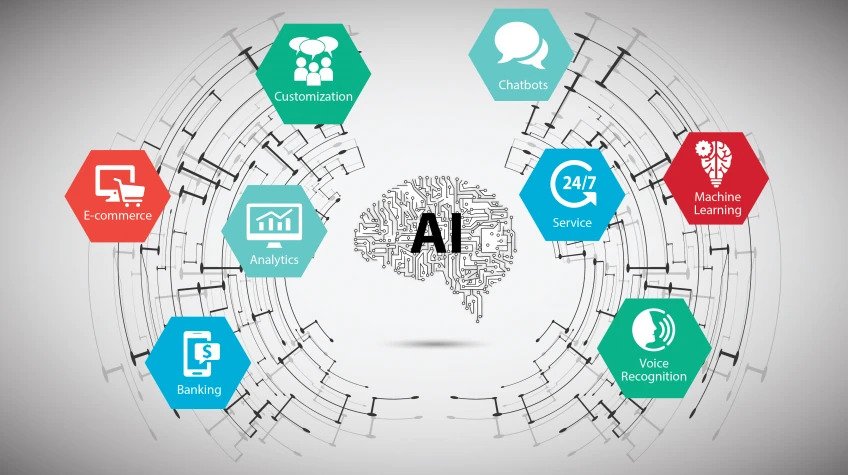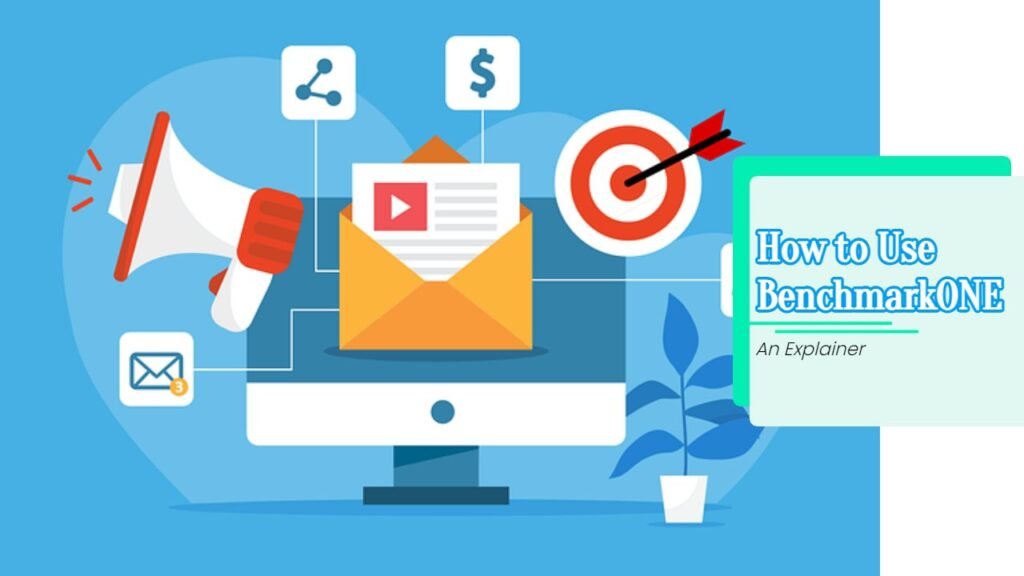Importance of Sales Strategy
A well-defined sales strategy is crucial for any organization aiming to achieve sustained growth and success in a competitive market. As you navigate the complexities of marketing your goods and services, understanding the nuances of a sales strategy can make a significant difference in your overall business performance.
Defining Sales Strategy
A sales strategy is a comprehensive plan designed to reach revenue targets by identifying target customers and effective selling channels. This strategy includes creating a clear sales process that outlines how to engage potential clients and convert them into loyal customers. It is essential to remember that a successful sales strategy is not static. It must evolve with changing market conditions and consumer behaviors. Tracking progress and making strategic adjustments are vital to maintaining effectiveness (Salesforce).
| Element | Description |
|---|---|
| Target Customers | Specific demographics and segments to focus sales efforts |
| Selling Channels | Platforms and methods used to reach and engage customers |
| Sales Process | Step-by-step framework for onboarding and closing sales |
Differentiating Sales Strategy and Sales Planning
While sales strategy and sales planning often get confused, they serve distinct purposes within an organization. The sales strategy provides a holistic view of market capture plans, guiding how the sales team positions the business and its offerings in the marketplace. In contrast, sales planning refers to the specific methodologies that outline the resources needed to execute the sales strategy. This includes determining revenue types, number of accounts, and pipeline coverage required to meet targets (Salesforce).
Key Differences:
| Aspect | Sales Strategy | Sales Planning |
|---|---|---|
| Focus | Holistic approach to market share | Detailed execution plans |
| Components | Goals, customer needs, value position | Resource allocation, revenue forecasting |
| Timeframe | Long-term vision | Short to mid-term execution |
Understanding these differences allows you to align your efforts more effectively and equips your team with a clear path to follow in the sales process. To explore more on how to implement a successful sales strategy for your goods and services, consider checking our articles on marketing strategy for goods and services and consumer behavior towards goods and services.
Elements of an Effective Sales Strategy
An effective sales strategy is foundational for any business aiming to market its goods and services successfully. Key components include advancing customers in the pipeline, the importance of repeatable steps, and utilizing sales tools for improved efficiency.
Advancing Customers in the Pipeline
Advancing customers through the sales pipeline is essential for maximizing conversion rates. You should employ clear steps tailored to guide potential customers from initial contact to closing the sale. This systematic approach not only helps in recognizing when to take specific actions but also aids in handling objections and rejections effectively. A structured sales process offers a blueprint for your team to follow, ensuring consistency and clarity in navigating potential hurdles. For a deeper understanding of sales strategies relevant to your business, refer to resources on marketing strategy for goods and services.
| Pipeline Stage | Action Steps |
|---|---|
| Lead Generation | Identify potential leads through various channels. |
| Qualification | Assess leads to determine their suitability. |
| Proposal | Present tailored solutions to address client needs. |
| Closing | Negotiate terms and finalize the sale. |
Importance of Repeatable Steps
Incorporating repeatable steps into your sales strategy enhances the likelihood of closing deals and fosters predictability in results. Such techniques create a consistent approach that allows your sales team to repeat successful actions reliably. A well-defined process serves not only as a guide for your team but also as a metric by which you can evaluate performance and identify areas for improvement. By establishing best practices, you streamline sales efforts and promote consistent customer experiences. For additional insights, explore how service marketing strategy can play a role in developing repeatable sales processes.
Utilizing Sales Tools for Efficiency
To enhance efficiency in your sales strategy for goods and services, leverage various sales tools designed to optimize performance. Customer relationship management (CRM) systems, along with comprehensive reports and dashboards, facilitate seamless pipeline management and sales forecasting. By consolidating essential data in one location, these tools not only track key metrics for each sales representative but also provide invaluable coaching opportunities to elevate overall performance. Investing in these technologies can significantly improve productivity, allowing your team to focus on building relationships and closing deals. Discover more about leveraging technology for your business in areas like e-commerce for goods and services.
By integrating these elements into your sales strategy, you position your business to adapt and succeed in a competitive market, ultimately improving your bottom line and customer satisfaction.
Sales Strategy and Customer Relationship Management
Incorporating Customer Relationship Management (CRM) into your sales strategy can significantly enhance the effectiveness of your efforts in marketing goods and services. A well-implemented CRM system enables businesses to streamline their processes, ultimately leading to improved customer interactions and satisfaction.
Role of CRM Systems
CRM systems serve as a centralized platform for managing customer information, interactions, and transactions. They capture essential data from various touchpoints, allowing you to create a unified customer profile. This unified profile benefits customer service representatives by equipping them with the knowledge needed to maintain a high level of service (Salesforce). Effective CRM systems provide automation and tracking that enhances follow-up processes and optimizes sales pitches.
| CRM Feature | Purpose |
|---|---|
| Unified Customer Profiles | Centralizes customer data for better insights |
| Automation Tools | Streamlines repetitive tasks and processes |
| Interaction Tracking | Monitors communication history for better service |
Benefits of Utilizing CRM
Utilizing CRM software yields several advantages for businesses of all sizes. One key benefit is the potential for increased effectiveness in sales, marketing, and customer service efforts. Implementing a CRM platform has been shown to enhance overall operational efficiency, leading to higher sales conversion rates and customer retention (Salesforce). Furthermore, CRM tools foster better understanding of customer needs, allowing for targeted offers and increased customer lifetime value.
Key benefits of CRM include:
- Improved customer tracking
- Enhanced communication across departments
- Increased opportunities for cross-selling and upselling
- Better management of customer expectations
Enhancing Customer Service with CRM
The integration of a CRM system substantially contributes to the quality of customer service provided by your organization. By offering insights into customer behaviors and preferences, you can tailor your interactions and solutions to suit individual needs, thus promoting customer satisfaction. Additionally, CRM systems powered by AI can analyze data to provide personalized recommendations, automate routine tasks, and enhance response times, all of which further develop positive relationships with your clients (Salesforce).
Utilizing CRM effectively creates a more organized approach to managing customer relationships. By focusing on customer satisfaction and engagement, you position your business for long-term success in implementing a comprehensive sales strategy for goods and services.
Pricing Strategies for Goods and Services
Selecting the right pricing strategy is crucial when marketing your goods and services. Your pricing decisions can significantly impact customer perceptions and ultimately your sales success. This section discusses common pricing strategies, the benefits of value-based pricing, and the importance of competitive pricing.
Common Pricing Strategies
There are several common pricing strategies that you can implement to enhance your sales strategy for goods and services. These include:
Cost-Plus Pricing: This method involves calculating the total cost of producing a product and then adding a markup percentage to determine the selling price.
Competitive Pricing: Here, you set your prices based on competitor prices. This strategy requires keeping an eye on market trends.
Price Skimming: This approach involves setting a high initial price for a new product and gradually lowering it over time.
Penetration Pricing: Companies use this strategy to enter a market by setting a low price to attract customers and gain market share.
Value-Based Pricing: Pricing is based on the perceived value of the product or service to the customer, rather than just the cost of production or what competitors are charging.
The ideal approach should align with your company’s specific circumstances and target market. Pricing can indeed keep you up at night—price too low and you leave money on the table; price too high and you lose potential sales (BDC).
| Pricing Strategy | Description | Best Practices |
|---|---|---|
| Cost-Plus Pricing | Add a markup to the production cost | Ensure all costs are accurately calculated |
| Competitive Pricing | Set prices based on competitors | Monitor competitors regularly |
| Price Skimming | Start high and lower price over time | Ensure value justifies high initial price |
| Penetration Pricing | Set low price to gain market share | Gradually increase price once market share increases |
| Value-Based Pricing | Align pricing with perceived customer value | Conduct market research on customer preferences |
Value-Based Pricing Benefits
Implementing a value-based pricing strategy can provide a competitive edge, particularly if your offerings are unique or of high quality. This strategy focuses on how your product aligns with customer value, rather than being solely based on costs or competitors’ prices. It allows you to communicate the benefits of your goods and services effectively, justifying the price point based on the value provided (BDC).
The key advantages of value-based pricing include:
- Increased Profit Margins: By focusing on perceived value, you can command higher prices.
- Better Customer Retention: When customers feel they receive high value, they are more likely to return.
- Enhanced Brand Positioning: Aligning your pricing with value reinforces your brand’s market position.
Importance of Competitive Pricing
Competitive pricing is vital for attracting customers in a crowded market. Over 80% of consumers state they compare prices between competitors before making a purchasing decision (HubSpot Blogs). Developing a competitive pricing strategy allows you to position your products effectively, meet customer expectations, and maximize market share.
Strategies within competitive pricing can include:
- Cooperative Pricing: Collaborate with retailers to set uniform prices.
- Aggressive Pricing: Set lower prices than competitors to gain market share quickly.
- Dismissive Pricing: Valuate your product differently to ignore direct price comparisons.
Understanding these strategies and how they impact consumer behavior can help you fine-tune your pricing approach and enhance your overall marketing strategy for goods and services. For further insights, explore our resources on pricing strategy for goods and services and marketing strategy for goods and services.
Factors Influencing Pricing Strategies
When developing a pricing strategy for your goods and services, it is crucial to consider various factors that can impact your approach. The right pricing can enhance sales performance, while improper pricing may deter potential customers. Here are the key factors influencing pricing strategies.
Internal and External Factors
Pricing strategies are shaped by a combination of internal and external factors. Internal factors include your company costs, business objectives, and the perceived value of your product. These can dictate how much you can charge while still making a profit. External factors consist of consumer demand, competitor pricing, and broader market trends, all of which play a significant role in how you price your offerings (HubSpot Blogs).
| Factor Type | Examples |
|---|---|
| Internal Factors | Company goals, production costs, product value |
| External Factors | Consumer demand, competitor pricing, market trends |
Importance of Price Elasticity
Understanding price elasticity of demand is vital when setting prices. This concept measures how a change in price affects consumer demand. Companies generally aim for inelastic products, where changes in price do not significantly affect demand. This stability can result in more predictable revenue streams (HubSpot Blogs).
| Price Elasticity | Demand Reaction |
|---|---|
| Inelastic | Demand remains stable despite price changes |
| Elastic | Demand changes significantly with price fluctuations |
Conducting Pricing Analysis
Regularly conducting a pricing analysis is essential for maintaining an effective sales strategy for your goods and services. This involves evaluating your current pricing strategy against market conditions and consumer demand, independent of cost considerations. This approach will help you identify potential opportunities for pricing adjustments, ensuring that your pricing remains competitive in the marketplace.
| Analysis Component | Purpose |
|---|---|
| Market Demand Evaluation | Identify pricing opportunities and adjustments |
| Competitive Comparison | Ensure competitive positioning in the market |
| Consumer Feedback Analysis | Understand customer perceptions on pricing |
By factoring in both internal and external influences, considering the principles of price elasticity, and engaging in thorough pricing analysis, you can develop a well-informed pricing strategy that enhances your sales performance and meets your business goals. For further insights on optimizing your pricing strategy, explore our article on pricing strategy for goods and services.
Key Components of Successful Sales Strategies
To develop a robust sales strategy for goods and services, it is essential to focus on key components that drive success. This includes investing in your sales team, providing outstanding customer experiences, and emphasizing customer needs and preferences.
Investing in the Sales Team
Allocating resources to the development of your sales team is crucial. A well-trained and motivated sales staff will not only enhance your sales strategy but also contribute significantly to overall business growth. Best practices highlight the necessity of continuous training, mentoring, and professional development opportunities.
| Training Focus Areas | Description |
|---|---|
| Product Knowledge | Ensure the sales team is well-versed in the features and benefits of goods and services. |
| Sales Techniques | Teach effective communication skills and consultative selling approaches. |
| Customer Engagement | Foster skills for building relationships and understanding customer needs. |
By investing in your sales team, you empower them to engage positively with customers, fostering a culture of trust and authenticity.
Providing Outstanding Customer Experiences
Creating memorable customer experiences sets a strong foundation for sales success. Businesses should encourage honest interactions, understanding the customers’ needs without the pressure to buy. This approach builds long-term relationships that enhance customer loyalty.
| Key Elements of Customer Experience | Description |
|---|---|
| Personalization | Tailor interactions to meet individual customer preferences. |
| Responsiveness | Address customer queries and concerns promptly. |
| Customer Feedback | Actively seek and implement feedback to improve services. |
A customer-centric approach leads to increased satisfaction, enabling customers to feel valued. Implementing strategies to improve customer interactions can enhance your brand’s reputation and drive repeat business.
Focusing on Customer Needs and Preferences
Understanding the customer’s buying journey is vital for a successful sales strategy. Companies must align their goals with the actual needs and preferences of their target audience. Highlighting transparency and setting realistic objectives with measurable key metrics are essential practices (LinkedIn).
| Customer-Centric Strategies | Description |
|---|---|
| Market Research | Conduct thorough research to identify customer needs and market trends. |
| Value Proposition | Clearly define what sets your goods and services apart from the competition. |
| Segmentation | Target specific customer segments with tailored messages and products. |
By focusing on these components, you can create a comprehensive strategy that effectively meets customer desires and enhances your position in the market. This alignment not only drives sales but also fosters long-lasting customer relationships. For additional insights on your marketing strategy, explore our resources on marketing strategy for goods and services and consumer behavior towards goods and services.
Implementing Effective Sales Tactics
A successful sales strategy for goods and services hinges on thoughtful implementation of effective sales tactics. Each tactic plays a vital role in engaging potential customers and driving sales while aligning with your overarching sales objectives.
Targeting Customer Segments
Targeting specific customer segments is essential for creating personalized sales approaches. Understanding which segment most aligns with your offerings allows you to refine your messaging and strategies, ensuring they resonate with the target audience. For example, a B2B tech firm might focus on small businesses looking for budget solutions, whereas a luxury brand may target affluent consumers seeking premium products.
To implement this tactic effectively, you should:
- Identify and analyze key demographics, interests, and behaviors of potential customers.
- Segment customers based on their unique needs and preferences.
- Tailor marketing messages that speak directly to each segment’s pain points.
This focused approach not only improves customer engagement but also increases conversion rates. For more details on identifying target markets, check out our article on target market for goods and services.
Tailoring Sales Process
A tailored sales process that aligns with customer needs and purchasing habits enhances your ability to close deals. Customers appreciate when sales conversations reflect their unique situations, leading to a more meaningful interaction.
Key elements of a tailored sales process may include:
| Step | Description |
|---|---|
| Research | Gather information on the customer’s company and industry. |
| Qualification | Evaluate how your products/services can serve the customer’s needs. |
| Customization | Adapt your sales pitch to address specific customer pain points. |
| Follow-Up | Engage with customers after the initial pitch to maintain interest. |
By customizing the sales journey, you improve customer satisfaction while positioning your company as a trusted advisor rather than just a vendor. This approach also fosters loyalty and repeat business, which is essential for a sustainable sales strategy. Explore more about this process in our piece on marketing strategy for goods and services.
Thought Leadership in Sales
Establishing your company as a thought leader can be one of the most effective strategies in modern sales. Thought leadership demonstrates your expertise and insights in your industry, reassuring potential customers about the value you offer. A HubSpot study found that 61% of decision-makers believe thought leadership could be moderately or very effective in showcasing a company’s value.
To develop effective thought leadership:
- Produce insightful content, such as blogs, whitepapers, and webinars, that address industry trends and challenges.
- Share case studies and success stories that highlight your company’s impact on clients.
- Engage with your audience on social media platforms to foster discussions and share knowledge.
By positioning your brand as a trusted resource, you create a lasting connection with customers and pave the way for future sales opportunities. For more strategies on positioning your brand effectively, you can refer to our article on positioning goods and services.
Influence of Marketing on Consumer Behavior
Understanding how marketing influences consumer behavior is crucial for developing a robust sales strategy for goods and services. By recognizing the factors that shape consumer decisions, you can tailor your marketing efforts to better meet customer needs and maximize sales.
Shaping Consumer Behavior
Marketing plays a significant role in shaping consumer behavior through various factors, including emotional responses, branding, and messaging. The effective integration of these elements can solidify brand loyalty and encourage repeated interactions with your products or services. According to Retail Today, successful marketing strategies impact how customers perceive a brand and influence their purchasing decisions.
| Factor Influencing Behavior | Description |
|---|---|
| Emotional Response | Marketing can evoke emotions that drive consumer decisions. |
| Branding | Strong branding fosters recognition and loyalty among customers. |
| Messaging | Persuasive messaging can motivate consumers to take action. |
Principles of Consumer Choices
Robert Cialdini outlines ten fundamental principles that influence consumer choices in his book “Influence.” These principles can effectively guide your retail strategies to better reach your target market.
| Principle | Description |
|---|---|
| Reciprocity | People feel obligated to return favors or kindness. |
| Commitment | Once someone commits to something, they are more likely to follow through. |
| Authority | Consumers trust knowledgeable influencers or endorsers. |
| Liking | People are more inclined to buy from those they like. |
| Scarcity | Limited availability creates a sense of urgency. |
| Humor | Engaging content can entertain and attract attention. |
| Social Proof | Consumers are influenced by what others do or say. |
| Color Psychology | Colors can evoke different emotions and responses. |
| Novelty | Unique or new products capture attention. |
| Consensus | People trust the collective opinion of others. |
For more details on consumer choices, you can explore consumer behavior towards goods and services.
Strategies to Influence Buying Behavior
Implementing various strategies can affect consumer buying behavior effectively:
- Transparent Marketing Practices: Be open about your products, pricing, and policies to build trust with your audience.
- Positive Customer Service: Excellent service can enhance customer satisfaction and loyalty.
- Evoking Emotions: Tailor your marketing campaigns to connect emotionally with potential customers.
- Free Trials: Offering a free trial can allow customers to experience your product before purchasing, increasing the likelihood of conversion. Data shows that 41% of respondents believe free trials are one of the most effective self-service tools in a sales strategy (HubSpot).
- Inbound Sales Calls: Prioritize these as they often represent hot leads; focus on being helpful and solution-oriented to engage prospects effectively (HubSpot).
Employing these strategies can enhance the effectiveness of your marketing and significantly influence purchasing behavior, ultimately leading to greater success in selling your goods and services. For more resources, consider exploring marketing strategies for goods and services.





















